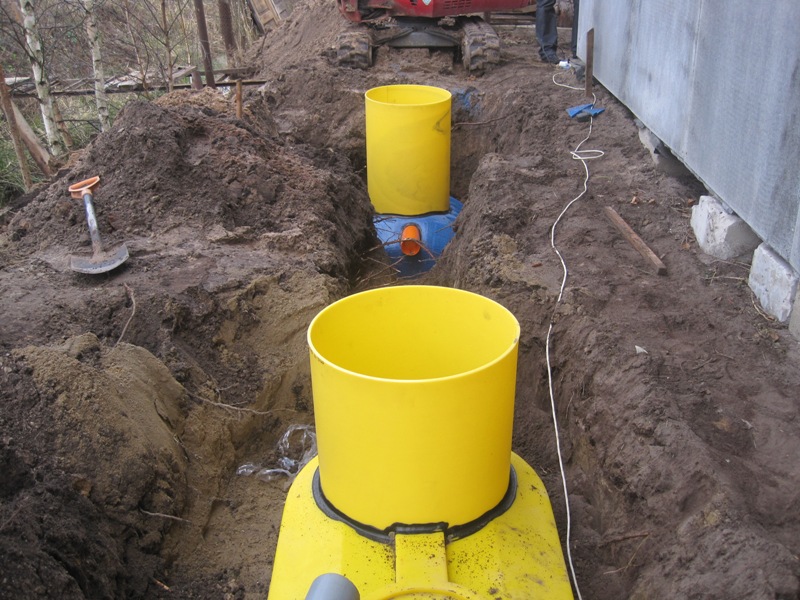How to dig a sewer
Most summer residents come to their sites on the weekend, so they often stay for several days. Some even spend holidays at their summer cottage. Therefore, they need to take care of the availability of all communications necessary for life, including sewerage. As a rule, autonomous sewerage is built in such areas. How to dig a sewer on the site yourself - almost all novice summer residents ask themselves this question.
First of all, you should understand where the groundwater passes through your site and at what depth. Dig a hole near your country house, the depth of which should be at least 1.5 m.
For work you will need the following materials:
- car tires;
- perforated pipes;
- garden drill;
- graphic or crushed stone;
- sewer pipe;
- exhaust pipe.
To equip the sewer, you will need used car tires. They can be bought at a car service or borrowed from friends. The best option would be tires from large trucks or from a tractor. Then your septic tank can be made larger. The number of tires depends on how deep the hole is. As a rule, this is due to the level of soil freezing in the area. Therefore, the sewer hole must be dug so that its bottom is below this level. In this case, you can use the septic tank even in winter, if necessary.
Finding a place for a septic tank
When you purchase tires, you can proceed to further work, that is, choose a specific place on the site for the septic tank. It should be noted that when choosing a place for a cesspool, one should take into account such a factor as the wind direction prevailing in the area. The fact is that the septic tank is best placed in such a way that various unpleasant odors do not rush towards the house.

How to dig
When a place is chosen, a decision must be made - how to dig a hole. You can dig it out by hand, or you can hire a small excavator. Here the main factor will be the availability of labor force. If you have enough workers, manual digging may cost you a bit less, but it will certainly take more time. If you use construction equipment, you will save time, but spend more money.
After the hole is dug, use a garden drill to drill a few holes in the bottom of the hole, where you will need to insert perforated pipes. This is necessary so that the water from the septic tank can go into the ground and be cleaned.
Pit treatment
In order for the bottom of the pit to become even, a layer of crushed stone or gravel should be poured into it, the height of which reaches approximately 20 cm. The perforated pipes should rise 60 cm above the embankment. The upper part of the pipes is covered with polypropylene nets to protect them from getting inside large solid particles from the sewer pipe.

The sewer pipe itself must be laid in a trench suitable for the cesspool. The other end of the sewer pipe should go to the outlet from the country house, through the pipes of which water comes out of the sink, shower and toilet. Remember that the trench needs a slope from the house to the septic tank so that the water can drain off by gravity.
Tire mounting
As soon as the trench is dug, start assembling car tires for the septic tank. Tires must be cut at the edges and stacked on top of each other, treating them with a liquid sealant. Lay them in such a way that the tire at the top rises slightly above the ground.
When the sealant is completely hardened, fill the space between the outside of the tires and the inside of the walls of the pit. If after that you have soil left, then use it for other purposes.
Coarse gravel is perfect for backfilling the space between the tires and the walls of the pit. It will not allow the soil to silt, and in addition, it will be an additional drainage of wastewater coming out of the septic tank. After all, this will still happen, no matter how high-quality the sealant is.

The top cover must be covered with something like a metal sheet, a polypropylene cover, or other material that is resistant to moisture and sudden changes in temperature.
Odor protection
To prevent the unpleasant odor from leaking out, a fan pipe is installed in the septic tank, the level of which is much higher than the top cover of the cesspool.
The length of the pipe is influenced by:
- location of the septic tank;
- wind direction at that location.
In other words, the closer the septic tank is to the house, the higher the exhaust pipe becomes.









